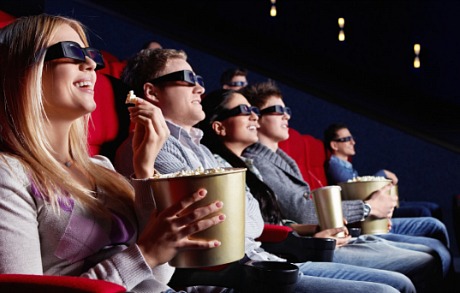In a just-posted article, Toronto Star film critic Peter Howell discusses the gap between popular movies and award-worthy fare, which is more pronounced this year than usual. “We’ve [all] become accustomed in recent years to films that appeal to both art house and multiplex audiences landing on the critical radar for likely Best Picture nominees at the Academy Awards,” he writes. “By this time last year, The Martian and Mad Max: Fury Road had leapt the art vs. mainstream gap, with The Revenant close behind them. All three were eventual Best Picture nominees.
“But that’s not happening in 2016 — not yet, at least.”


MCN’s David Poland agrees with Howell, and so does Awards Daily‘s Sasha Stone. “If you ask [non-industry] people, most won’t have seen or even heard of the films that are up for the awards,” Stone observes. “The critics and the Academy tend not to think about whether the public likes the movie or not. But if you flash back to 2000, that mattered a lot. Films were awarded because they were well reviewed and well liked. Now it really doesn’t seem to be a requirement, which I guess is good and bad.”
The reason that the good, award-level stuff isn’t selling as many tickets as CG fantasy crap is partly traditional — Joe and Jane Schmoe have never been much for complexity or subtlety or social undertow. They just want a good ride, a few laughs. But it’s also due to the fact that with the rise of social media distraction and everything happening much faster, audiences are devolving more and more into the ADD realm. They want whiplash immediacy and intense stimulation and sweep-away dynamics, and in large part have simply become too coarsened to pay attention to films that require a little patience.
On 11.25 I posted a list of 26 excellent to very good films that have come out in 2016, and a lot of them haven’t made tons of money. (A few have yet to open.) But they’re not foo-foo films either — Kenneth Lonergan‘s Manchester By The Sea, Damien Chazelle‘s La La Land, Denzel Washington‘s Fences, David Mackenzie‘s Hell or High Water, Luca Guadagnino‘s A Bigger Splash, Ezra Edelman‘s O.J.: Made in America, Paul Verhoeven‘s Elle, Peter Berg‘s Patriot’s Day, Robert Eggers‘ The Witch, Gavin Hood‘s Eye in the Sky, etc.
If general audiences wind up shunning or under-supporting some of these, it’s absolutely not the fault of the filmmakers. It’s because many are simply too thick and distracted to settle in, much less buy a ticket in the first place.
This wasn’t as much the case in the ’90s, and was definitely less of a factor in the ’60s and ’70s. The culture is into longform episodic dramas at home, but theatres have come to be regarded more and more as theme parks than churches — as places where you pay to be razzle-dazzled more than moved or amused or aesthetically intrigued.
William Shakespeare understood the basic problem a long time ago: “The fault, dear Brutus, is not in our stars but in ourselves, that we are underlings.”
Howell has run the following quote from yours truly: “It’s a fool’s errand to try and validate the selection of Oscar-winning films with their corresponding box-office performance — i.e., if the film made money then the award-givers were wise and perceptive, but if it flopped or underperformed they might have made a mistake.
“That’s a slippery slope. Joe and Jane Popcorn have always paid to see the films they want to see as opposed to what the foo-foo elites have celebrated, and that’s fine. But let’s be frank — Joe and Jane tend to show good taste in movies the same way a stopped clock tells the right time twice a day.”












